
All categories
Featured selections
Trade Assurance
Buyer Central
Help Center
Get the app
Become a supplier

(11192 products available)






















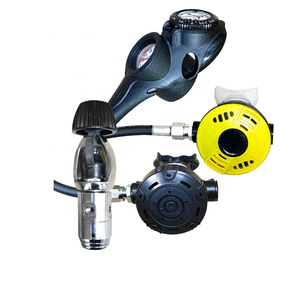
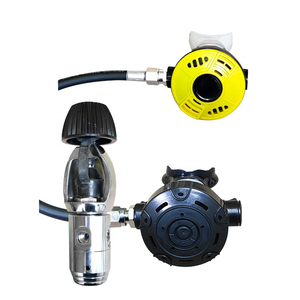





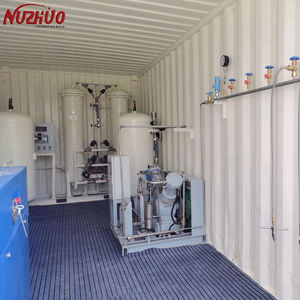
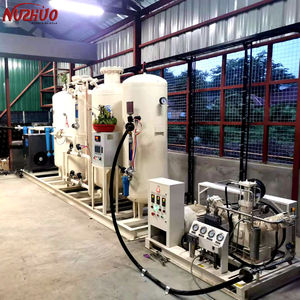


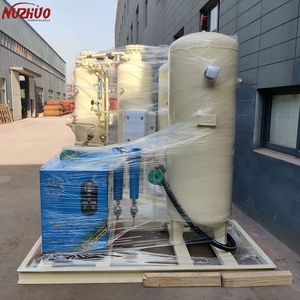
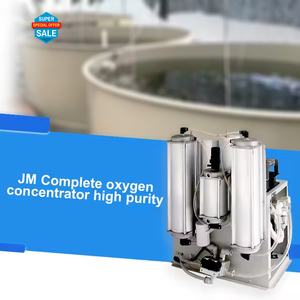
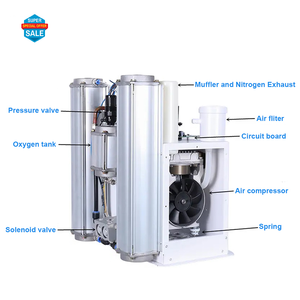

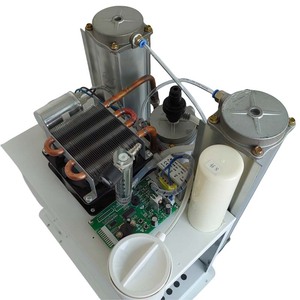
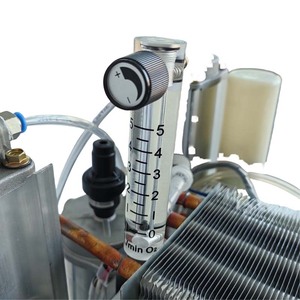

Industrial oxygen generators are machines that produce oxygen on-site for various applications. They utilize different technologies, such as pressure swing adsorption (PSA), membrane separation, and chemical oxygen generators, to create oxygen-enriched air.
PSA Oxygen Generators:
The molecular sieve zeolite is used in industrial oxygen generators that utilize pressure swing adsorption technology to separate oxygen from the atmosphere. These generators can produce pure oxygen (90% to 95%) and have various applications, including medical uses (oxygen supply for hospitals and healthcare facilities), industrial combustion (enhancing burn efficiency and reducing pollutants), wastewater treatment (aerating activated sludge), and fish farming (promoting fish growth and health).
Membrane Oxygen Generators:
Industrial membrane oxygen generators utilize polymeric membrane technology to separate oxygen from nitrogen. Generators provide a continuous supply of oxygen with purities ranging from 30% to 40%. Membrane oxygen generators are widely used in wastewater treatment facilities, aquaculture farms, and laboratories.
Chemical Oxygen Generators:
Chemical oxygen generators, also called chemical oxygen candles, are alternative types of oxygen generators. These generators produce oxygen through a chemical reaction by igniting a solid chemical mixture. They are typically used in closed environments (submarines, spacecraft, and emergency situations) or as backup emergency oxygen supplies. Chemical oxygen generators aren't commonly used for industrial applications, so their oxygen output isn't continuous.
Specifications vary depending on whether one's using a pressure swing adsorption oxygen generator or membrane-based oxygen generators. Here are some general specifications one needs to understand before purchasing an industrial oxygen generator.
Maintenance of an industrial oxygen generator is critical to keeping it working well and ensuring the oxygen it produces is of high quality. Here are some maintenance suggestions:
Oxygen generators produce oxygen that suffices the needs of different industries. Here are a few common applications of industrial oxygen generators:
Healthcare and Hospitals
Oxygen generators provide an uninterrupted oxygen supply for patients that require supplemental oxygen. They also offer support during emergency situations, surgical procedures, and anesthesia delivery.
Metal Production and Welding
In metal production industries, oxygen generators assist in the production and refinement of metals (such as steel, copper, and zinc) by facilitating combustion and providing high-temperature support. In welding processes, oxygen generators provide oxygen for welding fuels or gases to maintain a constant flame. They improve the quality of welds by providing pure oxygen. This reduces the presence of other gases, like nitrogen, that may result in blowholes in the welding seams.
Water Treatment
Industries use oxygen generators to treat wastewater and potable water. The increased oxygen levels support the growth of aerobic bacteria, which enhance wastewater treatment plants' efficiency. Oxygen injection also helps prevent the growth of anaerobic bacteria, reducing unpleasant odors.
Aquaculture
Oxygen generators offer supplemental oxygen for aquaculture systems, such as fish farms and shrimp ponds. They help control oxygen levels in closed recirculating systems or during periods of high-density biomass or elevated temperatures.
Food Packaging
Oxygen generators can modify the atmosphere inside food packaging to prolong the shelf life of perishable products. By reducing oxygen levels in packaging, retailers can inhibit the growth of spoilage microorganisms and slow down oxidative reactions that lead to food degradation.
Glass Production
The glass manufacturing industry uses industrial oxygen generators to increase the melting rate of glass and improve product quality. Oxygen enhances combustion efficiency in furnaces, resulting in higher temperatures for melting raw materials. It reduces the formation of defects in glass products, like bubbles and inconsistencies.
Combustion and Fuel Enhancement
Oxygen generators enhance combustion in boilers, furnaces, and engines. Increased oxygen availability improves fuel combustion efficiency, resulting in higher energy output and reduced fuel consumption. Oxygen enhancement can also lower emissions by promoting more complete combustion and reducing the formation of carbon monoxide and unburned hydrocarbons.
Mining and Mineral Separation
Industries in mineral separation and mining use oxygen generators in flotation processes and leaching operations. Oxygen promotes the oxidation of minerals, enhancing their wettability and separation characteristics in flotation. It also facilitates chemical reactions, like oxidation and leaching, improving the recovery of valuable minerals and metals.
Energy Production
Oxygen generators are used in energy production processes, like oxygen-enriched combustion and gasification. Oxygen-enriched combustion increases the efficiency of fuel combustion in turbines and gasifiers. This results in higher energy conversion efficiency. Oxygen can also be used in integrated gasification combined cycle (IGCC) power plants, where it reacts with fossil fuels to produce a gas that fuels turbines, leading to lower emissions and improved energy efficiency.
Here are a few factors that buyers should consider when looking at the applications and advantages of choosing oxygen generators:
Industrial and Medical Applications:
Check if the generator's specifications meet industry standards. For instance, ensure it can provide the volume of oxygen needed for a particular production process. Verify if the purity levels of oxygen are sufficient.
Supply Security:
Consider the number of suppliers offering the same model. Examine if there are alternative suppliers in case the primary supplier can't deliver. If possible, meet the suppliers' teams to evaluate their capabilities and capacities.
Quality and Compliance:
Take time to investigate the suppliers' quality systems. Do they comply with ISO standards and other relevant certifications? Ask to see documentation that proves the generators' quality and safety features.
Dependable Technical Assistance
When seeking technical help, consider if the suppliers have local representatives accessible to buyers. Also, evaluate if the technical team understands the generator's complexities. Choose a supplier that has a network of representatives to provide fast solutions.
Long-Term Cost Effectiveness:
Make a comparison of the maintenance expenses, spare parts prices, and logistics costs connected with sourcing from particular suppliers. While the initial cost of the generator may be interesting, buyers should calculate the long-term savings and total cost of ownership.
Business Reputation:
Study the reviews and ratings of previous buyers who purchased the same generator model. Pay attention to their comments and experiences to find out the strengths and weaknesses of the generator from a user's perspective.
Q1: What is the working principle of an industrial oxygen-generator machine?
A1: The industrial oxygen generator machine uses the PSA process to provide oxygen. It offers compressed air. The generator splits air into nitrogen and oxygen with two zeolite-filled towers. Oxygen exits, and nitrogen stays. It switches roles after seconds. The system makes 93%-95% pure oxygen.
Q2: What are the safety features of an industrial oxygen generator?
A2: Industrial oxygen generators have safety features. They stop the air compressor if the pressure is too high. They use oxygen sensors to monitor generator output. Their electrical parts are weatherproof. Some models protect against ignition sources. These safeguards help safe operation under industrial conditions.
Q3: What are the limitations of industrial oxygen generators?
A3: Industrial oxygen generators have some constraints. They may not work for big industries that need lots of oxygen all the time. Their running costs might be lower than oxygen tanks. They are fine for small and medium industries but could be higher at scale. The oxygen purity must be high for some uses, but the generators can only make a maximum of 95% purity. They are practical for many industries but for less than big bulk needs.
Q4: Can an industrial oxygen generator be used in combination with other equipment or technologies?
A4: It is possible to use an industrial oxygen generator together with other pieces of equipment or technologies. For instance, oxygen might be fed into a combustion system to enhance fuel burning and raise energy production. In another case, an oxygen generator could supply oxygen for a biological treatment process used to eliminate pollutants from wastewater. Additionally, the generator may be utilized together with storage systems or filtration units to meet a variety of industrial requirements.